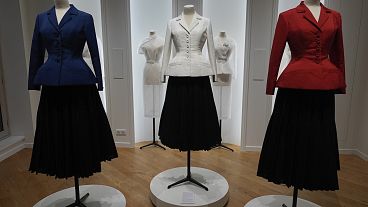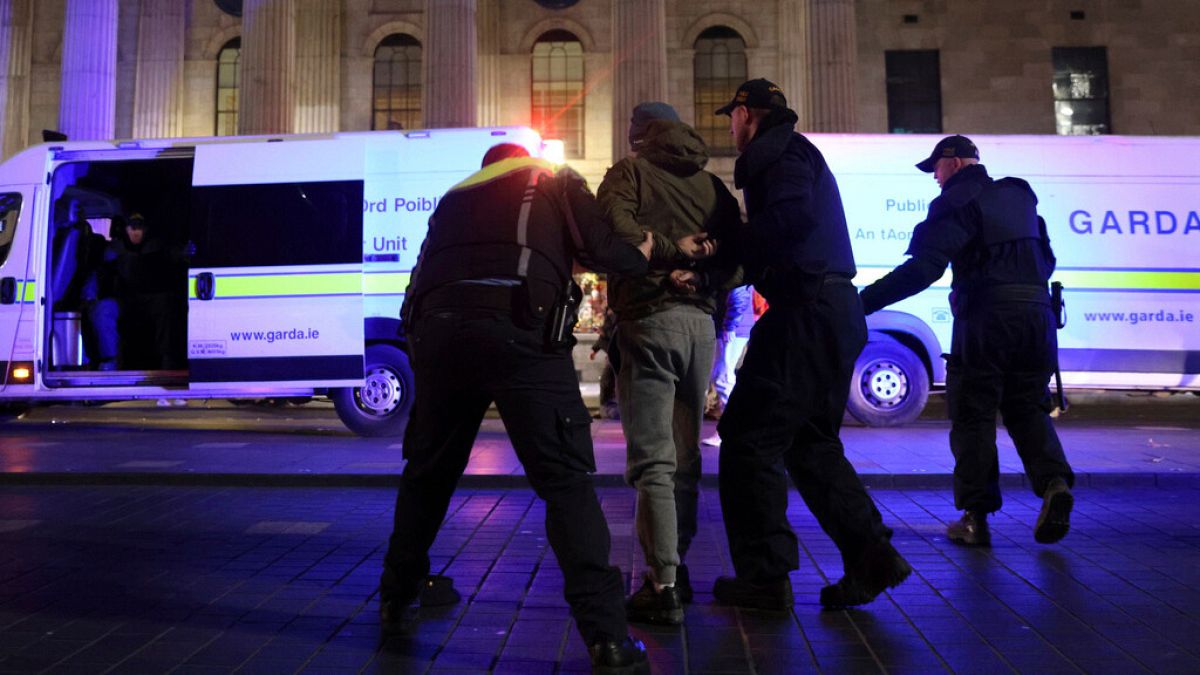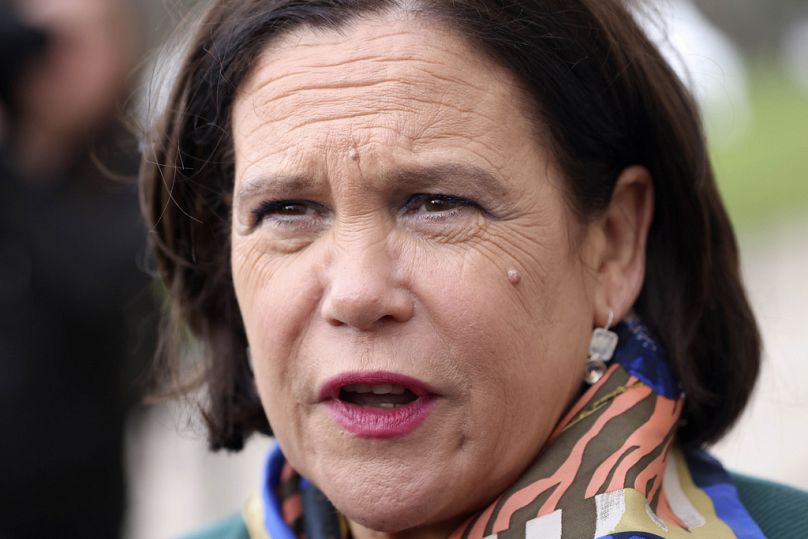Not long ago looking like a government-in-waiting, Ireland's leftist nationalist party suddenly finds itself out of step with a core constituency.
Until just a few months ago, Ireland was psychologically preparing for what would have been one of its biggest political earthquakes in generations: a government led by nationalist party Sinn Fein.
But suddenly, what once looked inevitable now feels anything but — and far from making the political weather, the once-surging party is being forced to adapt to a changing climate.
Despite its history as the political wing of the terrorist Provisional Irish Republican Army during the Troubles, Sinn Fein has successfully turned itself into a mainstream force, albeit with a markedly leftist and populist bent by the standards of Irish politics.
At the last general election in 2020, it won nearly a quarter of the national vote, more than either of the country’s two largest established parties, Fianna Fáil and Fine Gael. In the years since, polls frequently indicated it could be in a position to form a coalition government after the next national vote.
But in June this year, the European elections and simultaneous local vote saw Sinn Fein fall well below expectations, putting an end to the running assumption that it would be running the country in a coalition government of some kind by this time next year.
In a cruel irony, this setback came just after the party performed strongly in Northern Ireland at the UK general election on 4 July, where Irish nationalist parties won more of the region’s seats than those who believe the north should remain part of the UK. Sinn Fein is also the largest party in the Northern Irish Assembly, where its regional leader, Michelle O’Neill, is the first Irish nationalist ever to hold the post of first minister.
Given that the party’s raison d'être is to fully unite the island of Ireland as a single state, ending British rule in the six counties that make up Northern Ireland, its performance in the republic is now lagging behind its achievements in the north will be a major disappointment.
To make things more difficult, there are signs that Sinn Fein is losing ground with some of the communities at the very core of its historical base among working-class communities in Ireland’s cities and towns.
Revolt on the right
With the rise of a generation who do not associate it with the traumatic history of violent conflict on the island of Ireland and in the UK, the party has started to draw more support from educated, left-leaning and more affluent young Irish voters who share its progressive views on climate change, foreign affairs (particularly the Israel-Palestine conflict) and LGBTQ+ issues.
However, as it has worked hard to attract these supporters, Sinn Fein has found itself struggling to appeal to many of its traditional voters as they face a serious housing crisis, one that has become a defining issue in Irish politics — and which has provided space for a nascent far-right movement to take hold.
Far-right activists and agitators have been organising in Ireland for some time, but even though several extreme and anti-immigration parties have been formally established, they have so far failed to unify behind one.
Nonetheless, 2023 marked a watershed moment in their efforts as they successfully latched onto existing grievances about the perceived pressures placed on society by large-scale immigration, refugee arrivals and asylum seekers.
Ireland has taken a particularly large number of Ukrainian refugees — some 80,000 since Russia’s full-scale invasion in 2022 — and has housed many of them in hotels, including in small towns across the country.
There has also been an influx of people seeking asylum from a range of other countries. For the most part, these new arrivals have been received without incident or rancour. But the politics of accommodating them is not straightforward.
The main issue is Ireland’s chronic housing supply shortage, which has its roots in the financial disaster of 2008 and an ensuing era of underinvestment and sluggish housebuilding.
The scale of the crisis is hard to overstate: while Ireland is home to a population of 5 million, the official estimate from the government’s Housing Commission says the shortfall of homes could be as high as 250,000.
Since the end of COVID-19 restrictions, evictions from private rented properties have become a major issue, and rents have risen sharply. There has been a concerted effort to increase the rate of housebuilding, with the government now committed to building more than 30,000 homes a year.
But while the shortage is addressed, many Irish families remain in temporary accommodation themselves — this as tens of thousands of new arrivals intending to settle in Ireland add pressure to the country’s desperately squeezed housing supply.
Far-right instigators have seized on this issue to foment not just discontent, but violence.
Out in the streets
The main event to capture public attention was a full-blown riot in Dublin last November, which broke out after a man stabbed several people, including children, outside a primary school. The alleged perpetrator was a homeless man of Algerian descent who had been living in Ireland for 20 years.
Soon after news of the stabbings broke, violent scenes and looting broke out in the area, leading to some 40 people being arrested. Many blamed the incident on incitement and misinformation shared by far-right influencers, as evidenced by racist, anti-migrant and anti-Muslim chants heard during the riot.
However, while the incident was shocking, it was not even the first episode of anti-migrant violence in Dublin last year. In March, an encampment of unhoused migrants in the city centre was attacked and burned to the ground in an event celebrated by online racist groups as a “total gaelic victory”.
In the aftermath of these incidents, police have made an effort to deter asylum seekers and immigrants from sleeping rough in the capital, even going so far as to clear camps in the early morning — only for similar ones to spring up again nearby.
Other incidents continue to flare up around the country, with right-wing influencers and would-be political leaders routinely sharing footage of protests outside migrant reception centres and buildings being prepared as temporary accommodation for asylum seekers.
The most recent major conflagration came in Coolock, in North Dublin, where a protest against a mooted migrant housing centre escalated into clashes with police and saw a former factory set on fire.
The protest was backed by a group calling itself "Coolock Says No" — a formulation adapted by online activists to frame similar flare-ups in other areas.
‘None of us have a veto’
From Sinn Fein’s point of view, the increasingly visible anger at large-scale refugee arrivals is not easy to navigate.
The right-wing agitators who generally amplify small protests on social media often frame them in terms of both social class and Irish racial identity, fusing a long nationalist tradition of working people’s uprising with which Sinn Fein identifies together with more explicitly racist and ethnonationalist discourse that cuts directly against the liberal social values they have embraced in recent years.
In the areas of social media where the issue is being stirred up, hashtags like #IrelandIsFull are giving way to ones like #IrelandForTheIrish. Protests against asylum reception centres and housing in various areas are cast by journalists from lesser-known hardline right-wing outlets as part of a nascent uprising against the government, and news stories involving violence or criminality by foreigners — particularly those of colour or of Muslim faith — are rapidly circulated.
For Sinn Fein, the difficult task is to simultaneously critique the government’s policies in their role as an opposition party, reject knee-jerk and racist opposition to the arrival of asylum seekers and immigrants, and recognise that some of the voters it needs are getting involved in what looks increasingly like a social movement, albeit one that does not yet have a principal electoral outlet of its own.
The awkwardness of this balancing act was on display at a recent press conference where party leader Mary Lou McDonald was asked by a right-wing journalist why she did not support communities getting a veto over proposed asylum centres.
“I really don’t think it’s helpful for us to get lost in the veto area,” she said, “because actually, what people are looking for is dialogue. They’re also looking for clear information … clarity of information, dialogue, to be listened to.
“You have your voice, you have to be heard; none of us have a veto. None of us have a veto. That’s not how democratic processes of decision-making and planning work.”
The palpable tension in that exchange notwithstanding, it seems for now that while the full-on anti-asylum and anti-immigration tendency has made some inroads in local politics, it still has little foothold at the nationwide parliamentary level.
That makes a marked difference from other European countries like the UK, France and Germany, where heavily anti-immigration parties win large chunks of the national vote without getting into government.
And on the judicial front, efforts to block accommodation for asylum seekers are not yet making much headway. This week, a judge rejected a case seeking to stop applicants being housed in a hotel in the small community of Dundrum, County Tipperary, which has previously served as a temporary home for Ukrainian refugees.
The petition, wrote the judge, claimed “that International Protection Applicants are more likely to be burglars than those staying as guests at the hotel or Ukrainian refugees staying there. I lend no weight to that assertion.”
Meanwhile, the High Court in Dublin ruled that the Irish government has breached the EU Charter of Fundamental Rights by failing to provide shelter and basic necessities to asylum seekers, many of whom remain camped out on the streets because there is nowhere to accommodate them.
These judgments will not soothe the inflamed tensions. Clashes between police and angry residents in various communities are getting more attention in the mainstream media, while an online ecosystem of right-wing Irish outlets and influencers is growing its audience.
All the while, Sinn Fein, which not long ago looked like a government in waiting, is grappling with the fact that the socially liberal segment of the younger generation may not be enough to put them ahead of the establishment — and that a significant number of the anti-establishment working-class voters they once counted on may be turning away from them just as they thought they were within reach of power.













